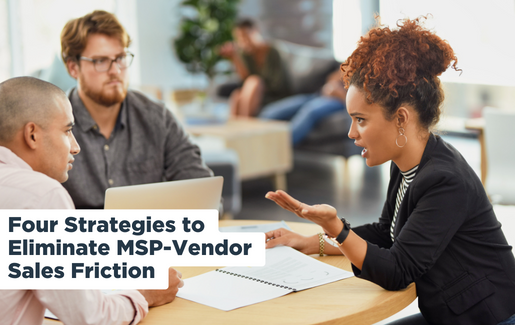 Let’s dive into a critical topic that affects both vendors and channel partners in our industry—sales friction. This sometimes-unnoticeable barrier can hinder growth and success, but fear not, as I've got some practical insights to help you navigate and overcome these challenges.
Let’s dive into a critical topic that affects both vendors and channel partners in our industry—sales friction. This sometimes-unnoticeable barrier can hinder growth and success, but fear not, as I've got some practical insights to help you navigate and overcome these challenges.
The Sales Friction Conundrum
Before we jump into solutions, let's understand what sales friction really means in the context of vendor-channel partner relationships. Sales friction occurs when miscommunication, misaligned goals, complex processes and other factors slow down or impede the sales cycle. Can we stop using purchase orders and handwritten order forms already?
As vendors, we need channel partners to succeed, and our success is tied to their success. So, it's essential to address this friction to speed up transactional velocity and keep partners from churning to the next new solution.
Lastly, IT service providers serve small and medium-sized businesses. Most are small to medium-sized businesses themselves. Because of this they act more like consumers than they do enterprise customers. In turn this means that they expect to be able to buy, provision and manage the products they get from you just like an Amazon order or Netflix subscription.
Unraveling the Root Causes
To tackle sales friction effectively, we must identify the root causes that lead to this problem. Some common issues include mismatched goals and objectives between vendors and channel partners, lack of communication and incentives that don’t align with mutual success. Additionally, process issues related to lead generation, deal registration and overly complex sales cycles contribute to the friction we experience.
Strategies to Eliminate Sales Friction
We can overcome sales friction with some basic strategies. Let's see how we can create a vendor-channel partner collaboration that isn’t a drag.
Cultivate a Culture of Collaboration
Building strong relationships is key! Encourage open communication channels where both vendors and partners can share insights and challenges freely. Work towards a shared vision of success to align everyone's efforts toward common goals. Regularly scheduled face-to-face meetings or Zoom calls can help with this – just make sure there is an agenda that allows both sides to participate. It should include opportunities to share updates from both sides and confirm or adjust alignment to stay in sync.
Streamline Information Flow
Empower your channel partners with the right information at the right time. Efficient tools and platforms that enable easy data sharing and product training are invaluable in minimizing misunderstandings. A partner relationship manager (PRM) solution is ideal for this and usually includes modules like deal registration, training, marketing material repositories and discussion forums. They frequently have add-ons for market development funds (MDF) and incentive management as well.
Align Incentives and Compensation
When incentives are aligned, everyone wins. Just like with your internal sales team, incentives drive behaviors but often we don’t incentivize the right behaviors and things quickly get off course. Develop reward structures that benefit both vendors and channel partners, fostering motivation for success on both sides.
Simplify Sales Processes
Cutting out unnecessary steps in the sales cycle saves time and resources. Utilize technology to automate repetitive tasks, freeing up valuable time for more critical sales activities. Manual order processing is the enemy. In a perfect world, partners can purchase, provision and manage the vendor product from a self-serve portal or dashboard.
Impact of Frictionless Procurement
When I was an MSP partner, I purchased what was originally HoundDog, currently branded as N-able N-sight, as my remote monitoring and management (RMM) tool (yes, I am that old). I also had a professional services automation (PSA) – name withheld to protect the not so innocent. When I needed something in my RMM I just went in and added it. At the end of the month, I got billed – easy peasy.
My PSA on the other hand was a different story, it took an email or phone call (and sometimes even a meeting) to get something added or removed. Then I would get the bill and it would be wrong. The time lost and added frustration were tangible.
In the competitive world of managed IT services, overcoming sales friction is crucial for success. As vendors and channel partners, we must embrace collaboration, streamline processes and align incentives to forge a successful team. Let's break down these barriers and elevate our industry to new heights, together!
Get Involved
Join CompTIA’s North America Community to expand your network, leverage industry trends and access exclusive tools and programs to grow your business.
Eric Anthony is the partner engagement director at Egnyte and vice chair of CompTIA’s North America Community.

 Add CompTIA to your favorite RSS reader
Add CompTIA to your favorite RSS reader

